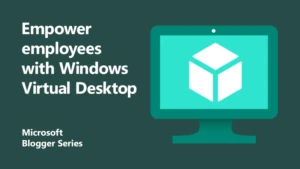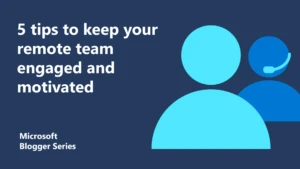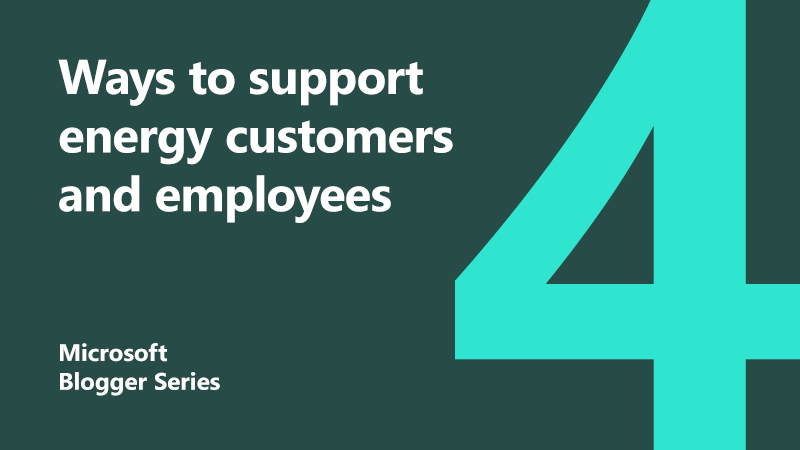
Digital dexterity: 4 ways you can support energy customers and employees while staying resilient
Very quickly, we’ve had to change the way we do a lot of things, including business. The energy industry however, is part of a critical infrastructure that still has to operate as normal, while adapting to changing energy demands, shifting customer dynamics, and business operational challenges.
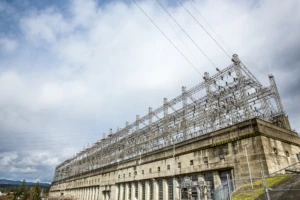 This is a period where utilities can focus on digital dexterity – actively engaging new technology to enable and transform business operations. This is to ensure the grid meets the reliability and safety requirements customers and regulators demand.
This is a period where utilities can focus on digital dexterity – actively engaging new technology to enable and transform business operations. This is to ensure the grid meets the reliability and safety requirements customers and regulators demand.
It’s not just about being innovative and flexible with technology. The trust in digital and the new working patterns it enables must also be addressed through people and culture. A data-driven strategy combining technology, people, and processes in a trusted environment will help employees and customers navigate changes where a timely response is of the essence. This will set energy utilities on a path of future success.
A few ways you can do this is to take a cloud-centric approach and make use of collaboration tools. Data and analytics will help employees maintain effective customers engagements but you may also need to think about new approaches to accurately forecast energy trading and the debt position that will arise as a result of shifting demand patterns.
Here are four ways to help with internal and external digital dexterity.
1. Workforce transformation
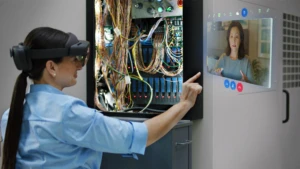 Most utilities have planned for, and already implemented changes to the way they work, from reducing meeting sizes to fully closing-down work locations and preparing contingency field workers.
Most utilities have planned for, and already implemented changes to the way they work, from reducing meeting sizes to fully closing-down work locations and preparing contingency field workers.
IT teams are closely working with their colleagues on network and communications infrastructure. They need to ensure continuity of business is maintained while you move to a remote workforce, including keeping data secure. Moving to remote collaboration tools and cloud-based platforms alleviates on-site staffing issues, enables speed of decision-making, and allows for remote expertise to be brought in from any location. Employees will also need the skills to be confident and get the best out of these platforms. Some type of re- or up-skilling may be required to ensure the trust needed.
What it means for businesses
Think of this as an opportunity to assess future workforce patterns. Combine your data and analytics with intelligence on cloud-based platforms like Dynamics 365 to provide better business outcomes and customer experiences. These will also allow your workforce to access the information they need, when they need it, quickly and securely from wherever they are.
What it means for employees
Working remotely doesn’t mean being isolated. Microsoft Teams lets employees chat, meet, or collaborate quickly and securely. There’s app integration for maintenance, job scheduling, job task completion, documentation, remote assistance, and it works on a range of devices for field-based, office-based, or home workers.
By inputting a degree of automation and using platforms that simplify processes, your employees will also have time to invest in up-skilling to match the workplace transformation.
What it means for customers
By moving to cloud-based platforms, you can provide a single view of a customer. This means you’ll be able to provide up to date, contextually relevant information to your customers. Solve problems quicker, and use data to create better experiences.
2. Customer experience
 Call centre staffing and availability will be impacted, this means you can leverage new technologies such as chatbots, apps, and websites to deliver digital customer experiences. The biggest impacts on customers will be an increase to their energy bill as they work from home and potentially also an inability to pay. Use analytics to better engage with customers, predict customer churn, and identify vulnerable customers where you can proactively offer help.
Call centre staffing and availability will be impacted, this means you can leverage new technologies such as chatbots, apps, and websites to deliver digital customer experiences. The biggest impacts on customers will be an increase to their energy bill as they work from home and potentially also an inability to pay. Use analytics to better engage with customers, predict customer churn, and identify vulnerable customers where you can proactively offer help.
What it means for businesses
Use a platform like Dynamics 365 to give employees a single view of customer information and lean on digital channels to support impacted call centre staff.
Use PowerApps to create easy tools that can quickly inform employees of new information, points of contact, and give them the ability to update their managers on their changing situation.
What it means for employees
Automated chatbots can help answer frequently asked questions. Data and analytics will provide customer-specific information and engagement suggestions as well. These will help give employees more time and knowledge to provide personalised customer support.
What it means for customers
Both business to business (B2B) and business to consumer (B2C) customers will be impacted. Consider reverting rates to non-time-of-use tariffs, allow customers to modify their energy plans mid-cycle, introduce bill payment holidays, and proactively contact customers to offer advice.
3. Remote monitoring and automation
Reduce physical onsite presence and streamline operations, with IoT technologies for remote monitoring, remote control, and automation of simple tasks. You can then take advantage of the data collected to create processes and quickly adapt to changing working patterns. Deliver an intelligent, connected field service by moving from a costly break–fix model to proactive, predictive maintenance.
What it means for businesses
By enhancing facilities and assets with technology and equipping field workers with mobility tools, you can use data to predict, detect, and resolve issues before they become a problem, saving you time and money. Timely data analysis will focus operational activities, prioritising work with essential assets and deferring the maintenance schedule of those less critical.
What it means for employees
Your technicians will have the time, tools, and information they need to resolve problems correctly the first time. Use remote assist and augmented reality to allow technicians to collaborate more efficiently by working together from different locations.
What it means for customers
Remote monitoring and automation ensure consistent and dependable operations, meaning less downtime.
4. Understand and forecast change
Focus on forecasting and prediction for an ongoing drop in demand (US energy consumption was three percent lower in March 2020 than in 2019, a loss of about three years of sales growth), and a shift in energy consumption patterns, not just on your network, but in the context of customer churn and bill revenue losses. Use innovative technologies such as AI and analytics on both forecasting and debt models to ensure forecasts do not swing wildly and drive up costs.
What it means for businesses
Data and analytics can further enhance the complex forecasting models of today. This will add additional resilience in predicting demand, future buying patterns, and shifting debt position. The increase in home energy consumption won’t fill the gap left by the drop from industrial customers. With a moving timeline due to economic unpredictability, accurate forecasting has increased relevance. There is opportunity to focus on renewable energy integration and tying dynamic grid balancing into new business models for real-time prediction.
What it means for employees
Employees will be able to drive change quickly using precise load forecasting to ensure operations aren’t interrupted in the coming months and preventing power outages. AI and data analytics can help reduce stress levels for your employees by taking over certain administrative tasks. They will then be able to focus on more critical work, improving the efficiency of internal processes, leading to reduced cost, and improved service.
What it means for customers
You will be in a better position to provide a reliable service to customers. Also you will ensure costs are not driven up due to fluctuating forecasts. This is especially critical as customers may have an inability to pay bills or seek payment holidays.
 Support your customers and employees
Support your customers and employees
By maximising the impact of AI, data, and analytics, you can gain better operational resilience and business digital dexterity. You’ll also be able to provide stable and empathetic customer experiences. With these tools and an environment of trust, your employees will feel supported and empowered.
Find out more
5 tips to keep your remote team engaged and motivated
About the author
Rik is responsible for establishing and driving Microsoft’s strategy and position in energy and resources in the UK.
Prior to joining Microsoft, Rik worked at Cisco for 13 years, with global roles in digital transformation, IoT/IIoT, and security in energy and process industries, specialising in new and emerging technology adoption. He created a number of global solutions, validated designs, training and collateral for industrial environments, with a focus on the OT/operational domain.
Rik has worked in various standards bodies/consortia including Open Process Automation, IEC61850, IEC62351, and been UK Cigre SCD2 Lead.
He has written for industry publications and journals, authored multiple technical and business white papers, and is a published author with a book on advanced security for IoT/IIoT.
Rik holds a Bachelor’s Degree, and an MBA focused on international leadership.

